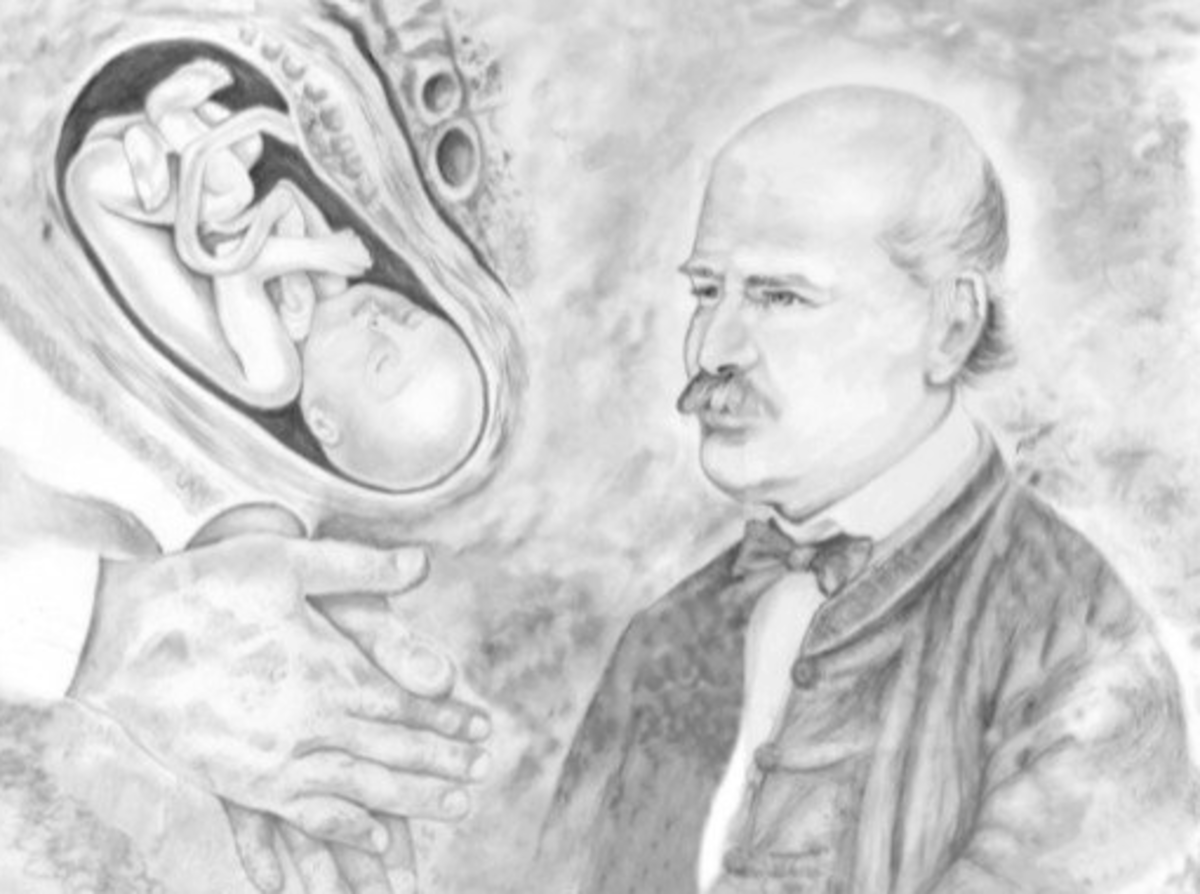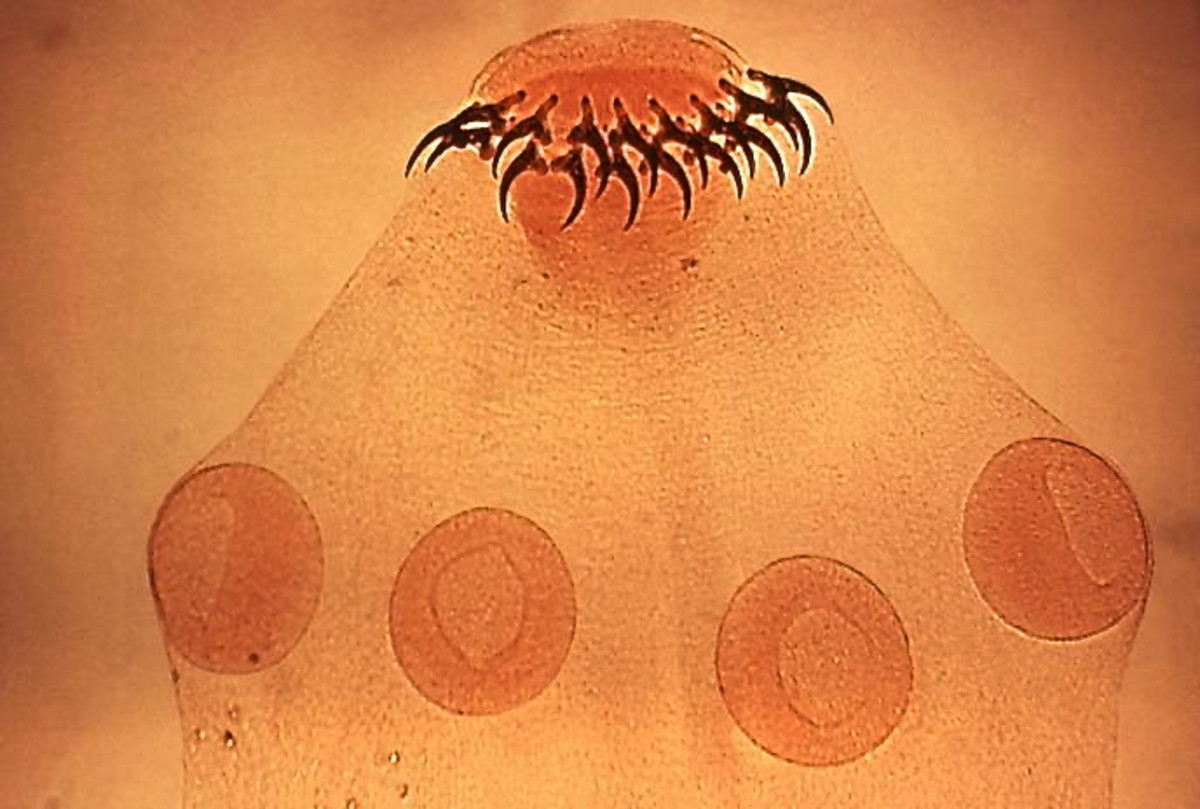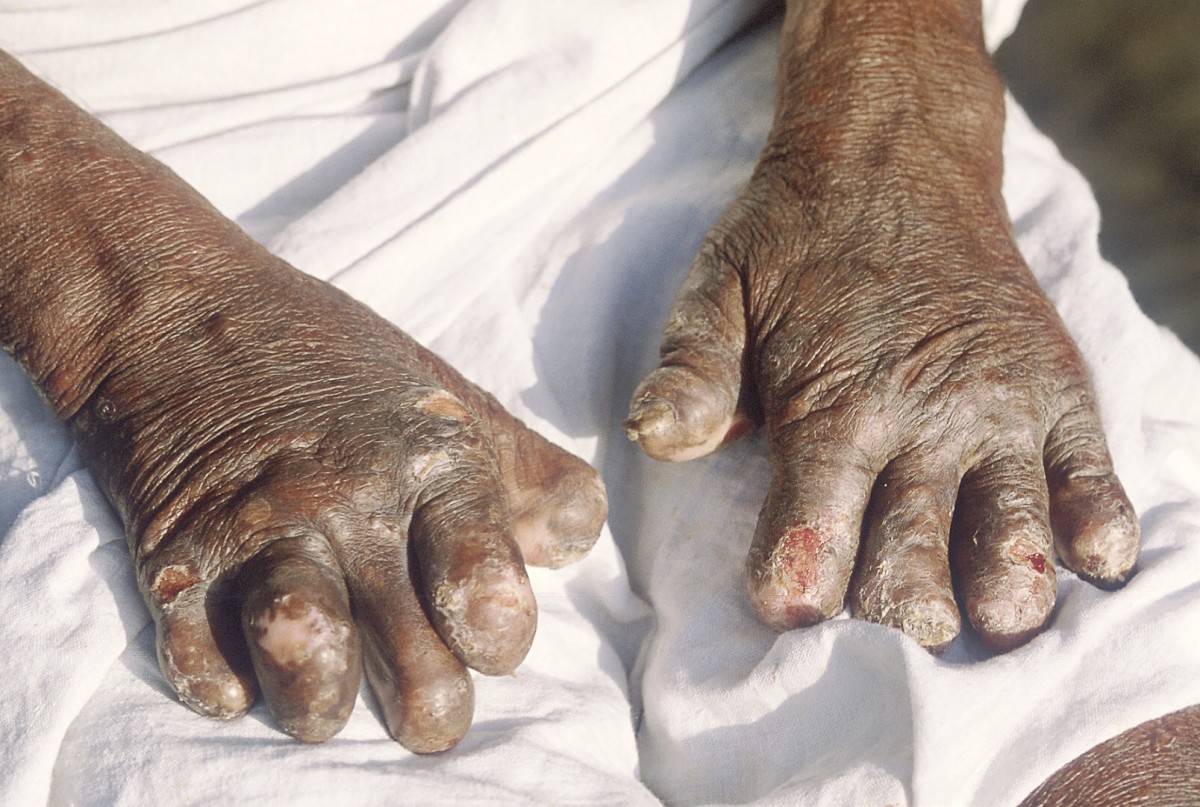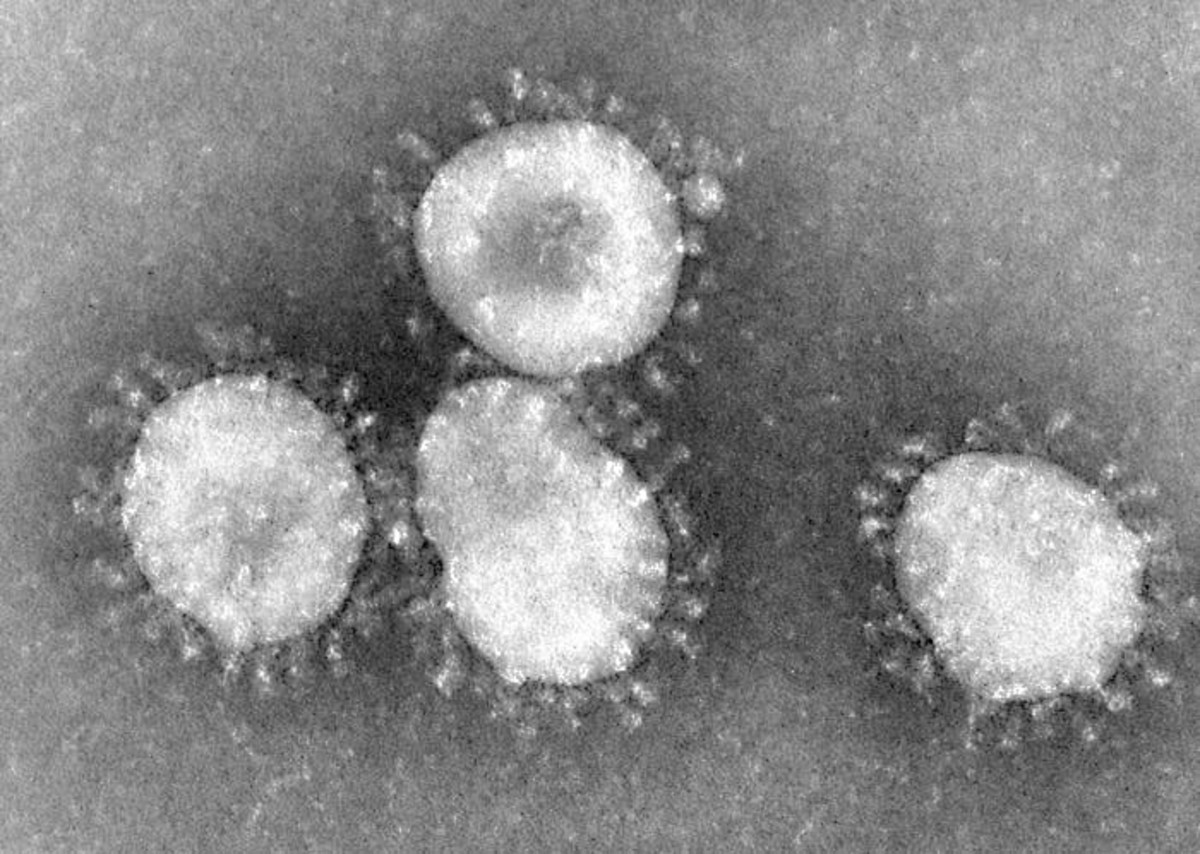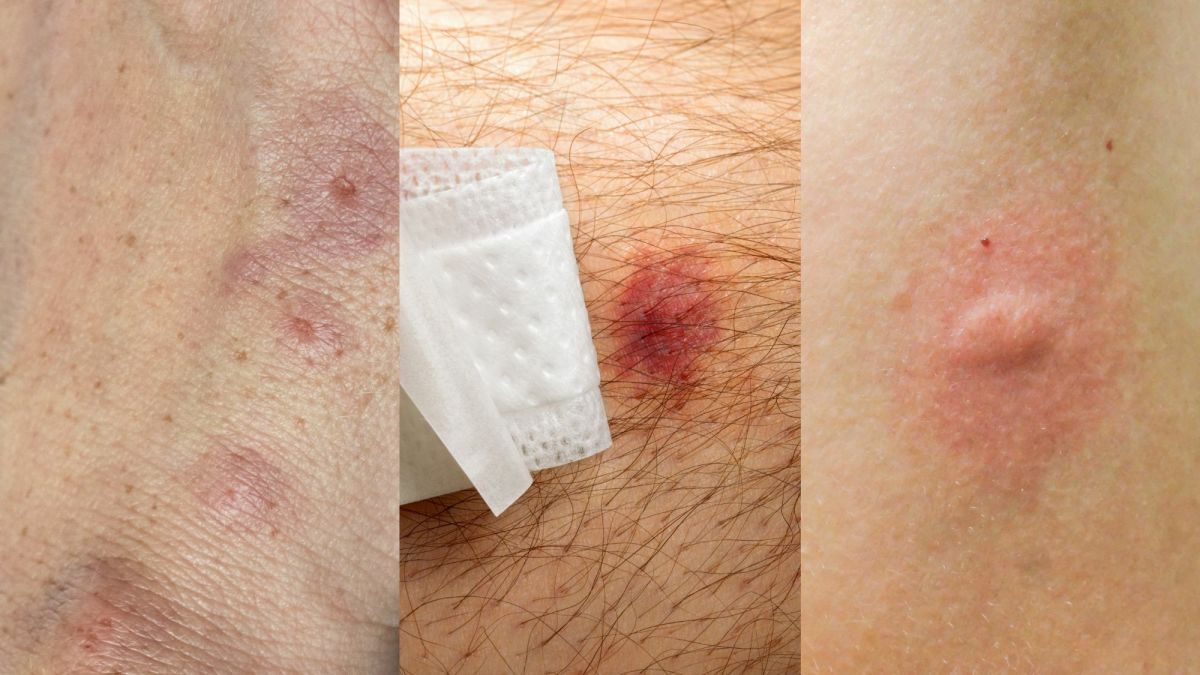Valuable Lessons Everyone Can Learn from "Monsters Inside Me"
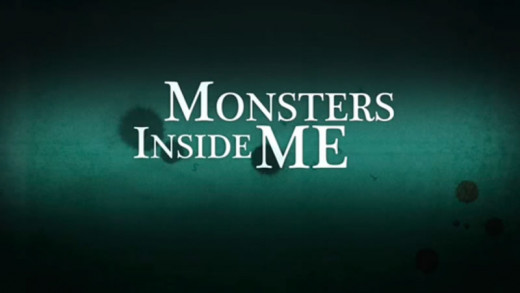
A few years ago my mom started watching the show Monsters Inside Me and she would proceed to tell me about some of the most disgusting things I think can happen to people. Needless to say, hearing about their ailments didn't exactly entice me to watch along with her. Then, about a year ago, I ended up watching an all day marathon of people excreting pus and bleeding without explanation and actually getting into it. I came to a few conclusions on my own about our species as a whole, but more so came to accept the fact that we are unbelievably fragile. One wrong move and we can end up contracting something dangerous and deadly. I already knew that, but watching this show drove the point home.
Even more importantly, I wanted to share six tips with you so you don't maybe end up sick...or dying. Or telling you something that maybe ya just didn't know.
1) If you find something weird on your body while you're in a country foreign to your own, or after you just came back from one, you probably shouldn't brush it off.
After going on vacation in South America, one man thought he got a run-of-the-mill pimple on his face. Only, this pimple hurt. As anyone who's ever had pimples would know, they don't usually hurt at all (which doesn't mean you don't mind having them), but he ignored it. Until it started to hurt worse...THEN PROCEEDED TO EAT HIS FACE.
It wasn't actually a pimple, but a flesh eating parasitic disease called Mucotaneous Leishmaniasis.
There was also a guy who went on a trip somewhere and noticed something moving around in his eye. As it turns out, he had a parasitic worm crawling around in there.
Either stay home or stock up on antibiotics. That’s all the advice I can offer on this…
Quote
International travel can pose various risks to health, depending both on the health needs of the traveller and on the type of travel to be undertaken. Travellers may encounter sudden and significant changes in altitude, humidity, temperature and exposure to a variety of infectious diseases, which can result in illness.
All individuals planning travel should seek advice on the potential hazards in their chosen destinations and understand how best to protect their health and minimize the risk of acquiring disease.
http://www.who.int/ith/precautions/en/
Mucotaneous leishmaniasis (MCL) cases are focused in South America, especially in Brazil, Paraguay, Ecaudor, Bolivia, Peru, Colombia, andVenezuela. Ninety percent of the cases occur in Brazil, Bolivia, and Peru.
Although the pathogenesis of visceral and cutaneous leishmaniasis are well understood, the pathogenesis of mucotaneous leishmaniasis (MCL) is still unclear. However, it is believed that host genetic factors are important in the advancement of the disease.
http://www.stanford.edu/class/humbio103/ParaSites2006/Leishmaniasis/Mucocutaneous.htm
Leishmaniasis is a parasitic disease. It is spread by the bite of an insect called a sandfly. Leishmaniasis is sometimes called kala-azar.
There are two main forms of the disease. Each is associated with different species of the parasite. Cutaneous leishmaniasis affects the skin. Visceral leishmaniasis damages the internal organs. Cutaneous disease is usually not serious. Visceral disease can be fatal.
http://www.healthline.com/health/leishmaniasis
(Season 3, my face eating parasite)
2) Don't play with dead things...seriously
Simply because times have changed, doesn't mean that the curiosity of children has died down. It's not uncommon to see kids pick up sticks and go poking at road kill, but there's a real reason that you're told never to let them do this and to call Animal Control immediately; they can still get rabies even if they're not bitten. Though __ cases are reported every year, don't be fooled, if you don't take proper precautions you can still contract this disease.
On one episode a little girl with a love of the outdoors and animals was playing outside. She found a dead animal in a woodsy area, pointed it out, and then went back home with her mother as usual. Only, she started getting sick. And sicker. Eventually she was rushed to the hospital where doctors had no clue what was wrong with her at first, but as she was nearing death’s door they concluded that she had, in fact, contracted rabies somehow. Her mother’s theory was that when her daughter took her jacket off she either put it down on, or close enough to, the animal’s remains so that the bacteria it carried stuck to the jacket’s material. When her daughter put her jacket back on that was apparently all it needed to begin its deadly infection. It’s probably a good guess to figure that a little girl that loves roaming throughout the woods probably had a small scrape somewhere on her that may or may not have been bleeding, but whatever happened was enough to invite the infection to spread inside her body rapidly.
Watch yourself, but watch your kids especially. We, as adults, should know better, but a lot of us don’t think twice about certain things, especially if we live in rural areas. I grew up getting cuts and bites all the time and it was pretty routine to pour a little peroxide on it, then a little alcohol, dab on a little Neosporin, slap a band aid on it, and call it a day. Dead animals were here and there, but they smelled so bad I didn’t want to go near them and I never made it my job to inch toward them. However, kids seem to not have the intense revulsion that a lot of us other folks have to such things, and I used to find my nephews and niece poking at dead squirrels and frogs near our house (within watching distance) all the time. Okay, maybe not all the time, but a handful of times. They never touched it directly, and I would see them outside with the long sticks (fallen limbs from nearby trees) poking here and there, bending down at certain intervals to get a better look at a particular organ, as they resembled extremely young, very short scientists. After they threw their sticks far far away they’d come back in the house filled with excitement as they told me about the way the intestines were lain askew, how tiny the heart was (if they found it), and all the crevices the ants were darting in and out of. My response after being impressed with their morbid curiosity tended to be something along the lines of, “Well, all of you better do well in your science classes. Now go wash up, get a cookie, and let’s not talk about the frog’s guts, lack of blood on the dirt, or the ants while we’re eating.” Thankfully, they never got sick, and I was always so paranoid about germs of any kind that I watched them like hawks, constantly screaming at them to not touch this or that whether it was a bug (living or dead), a mushroom that I wasn’t sure was in some way poisonous, a rusty wagon, or an aluminum can with a sharp edge. You get the picture. I did mention that I was paranoid, right? But sometimes paranoia isn’t all that bad. That was years ago, but I still do it to this day.
I believe that kids should be able to satisfy their curiosity to some extent, but not at the risk of their health. A lot of people eat squirrels, but that doesn’t mean they don’t carry disease while they’re living or dead, and I can’t imagine how many times those kids (the ones belonging to me) easily could have gotten ill when they trekked off on their own or with the older guys in the family who took them in the woods, but that’s life. We can’t protect ourselves or our kids from everything, but we can try. And one of the first lessons probably is not to play with dead animals in any way unless they’re dissecting something in biology. In school. In class. The way I did it.
Quote
1.All dead animals should be handled only while wearing gloves; this includes carrying of dead animals, during necropsy procedures, and the dressing out of carcasses. There are several types of gloves to choose from, including leather, rubber, and latex gloves. Rubber or latex gloves are preferred due to their low cost, wide availability, and ease of disinfecting (latex gloves are disposable).
2.The carcass should be placed in a plastic body bag and sealed as soon as possible. If a zoonotic disease is suspected (i.e., rabies, tularemia), it is recommended to double bag the carcass.
http://www.dfg.ca.gov/wildlife/WIL/disease/protocols.html
Rabies is a preventable viral disease of mammals most often transmitted through the bite of a rabid animal. The vast majority of rabies cases reported to the Centers for Disease Control and Prevention (CDC) each year occur in wild animals like raccoons, skunks, bats, and foxes.
http://www.cdc.gov/rabies/
(season 4, choosing between life and limb)
3) Doctors are constantly leaving stuff inside of people (and it could happen to you)
One woman battled through an entire year of what doctors called extreme asthma after her nose job, but as it turns out, the doctor left gauze inside of her nasal cavities which led to her constantly excreting thick green and yellow mucus. A man was left reeling from pain after his surgeon left a surgical tool inside of him, but since it didn't show up on his x-ray his doctors simply believed he was having a kind of post-op trauma.
Quote
Thousands of patients a year leave the nation's operating rooms with surgical items in their bodies. And despite occasional tales of forceps, clamps and other hardware showing up in post-operative X-rays, those items are almost never the problem.
http://www.usatoday.com/story/news/nation/2013/03/08/surgery-sponges-lost-supplies-patients-fatal-risk/1969603/
(season 4, my husband is hallucinating)
4) Washing Your Produce before you stick in your mouth isn't just a notion
After all of the cases of people getting sick from eating unwashed produce bought from stores, a lot of people are now well aware of the risks that are posed to their health if they choose not to properly wash their food. But that doesn't mean that there aren't a lot of people who think it's safer to eat unwashed food if it's being grown in their own backyards or on a nearby farm. They should beware of something called Rat Lungworm, a deadly parasite, which can be transmitted to their food in their garden by snails.
Also, why don’t you wash it off in case a dog peed on it. That’s enough of a reason for me.
Quote
Cases of eosinophilic meningitis caused by the rat lungworm parasite have risen sharply in Hawaii over the past 5 years. The parasite, a nematode (Angiostrongylus cantenosis), was carried from SE Asia to Hawaii by rats, which are the host. There is a possibility that there may be two species of the parasite in Hawaii. Angiostrongylus cantonensis has been identified in Hawaii, which causes human eosinophylic meningitis. Angiostongylus costaricensis has not yet been identified here but causes human abdominal angiostrongylisasis, affecting the digestive track and bowels. Many victims in Hawaii have had symptoms that suggest infection by Angiostongylus costaricensis.
The parasite can be transferred to slugs, and snails in the 3rd larval stage; it has also been found in flatworms. Humans pick up the parasite by ingesting slugs/slug slime contaminated fruits /vegetables/water or raw or undercooked slugs, snails, mollusks, prawns and monitor lizards.
http://www.malamaopuna.org/ratlung/needtoknow.php
Angiostrongylus is a parasitic nematode that can cause severe gastrointestinal or central nervous system disease in humans, depending on the species. Angiostrongylus cantonensis,which is also known as the rat lungworm, causes eosinophilic meningitis and is prevalent in Southeast Asia and tropical Pacific islands.
http://www.cdc.gov/parasites/angiostrongylus/
Rat Lungworm
5) Piercings can kill you
Before you get a piercing you're told to be sure to thoroughly cleanse the area that you want pierced. But what if there is a latent infection just waiting to happen in that area that you don’t know about? You'll probably end up getting a lot more than you bargained for besides a tongue ring, that's what. There are all sorts of bacteria on the inside and outside of your body and sometimes the bacteria is absolutely harmless where it is unless you do something (like get a cut) to allow it to invade another part of system.
One young woman found herself at the mercy of a medical team who wasn't sure what the hell to do with her since she'd come in with what appeared to be a severe migraine and seizures. The doctors told her parents to prepare for the worst. And then they found what was causing such a reaction in a seemingly healthy twenty-something girl—an abscess on her brain. If you didn't know, an abscess is a pus filled sac caused by inflammation. What was it caused by? Her tongue ring. How would a tongue ring cause a brain infection, you ask? Right before she got her piercing she'd had a strep throat, but just because you no longer feel the effects of a strep throat, doesn't mean that the bacteria that causes it immediately vacates your body. It lingers. And if you get a piercing, that opens up tissues on your body and allows any bacteria to enter your body and affect it in a number of ways. In her case, streptococcus intermedius went from her mouth to her brain causing the infection—which was cleared up afterwards with antibiotics. Lots and lots of antibiotics.
The associations of Streptococcus intermedius, S. constellatus, and S. anginosus (the three species of the S. milleri group) with clinical infections and sites of isolation were investigated by using a simple biochemical scheme to identify a collection of 153 clinical isolates. S. intermedius was associated with abscesses of the brain and liver, while both S. anginosus and S. constellatus were isolated from a wider range of sites and infections.
http://www.ncbi.nlm.nih.gov/pmc/articles/PMC265033/
Streptococcus Intermedius
(season 3, my brain has been highjacked)
6) You can go into the hospital for one thing and possibly contract something worse (that could kill you)
A pregnant woman who contracted the flu ends up going into the ER. Only her illness began to get worse. When her lung tissue becomes as thin as the sheets of a Bible (her doctor's words) and she was put on a ventilator and told that she and her baby probably wouldn't survive, her family was also told something else—she'd somehow contracted the Iraqi virus, or acinetobacter. And it's not contracted the way that you think, from soldiers returning from Iraq, but it typically occurs in ICUs among very ill patients from the instruments used by the doctors like tubes used for intubation.
Quote
Outbreaks of Acinetobacter infections typically occur in intensive care units and healthcare settings housing very ill patients.Acinetobacter infections rarely occur outside of healthcare settings.
http://www.cdc.gov/HAI/organisms/acinetobacter.html
(season 3, I coughed up worms)


